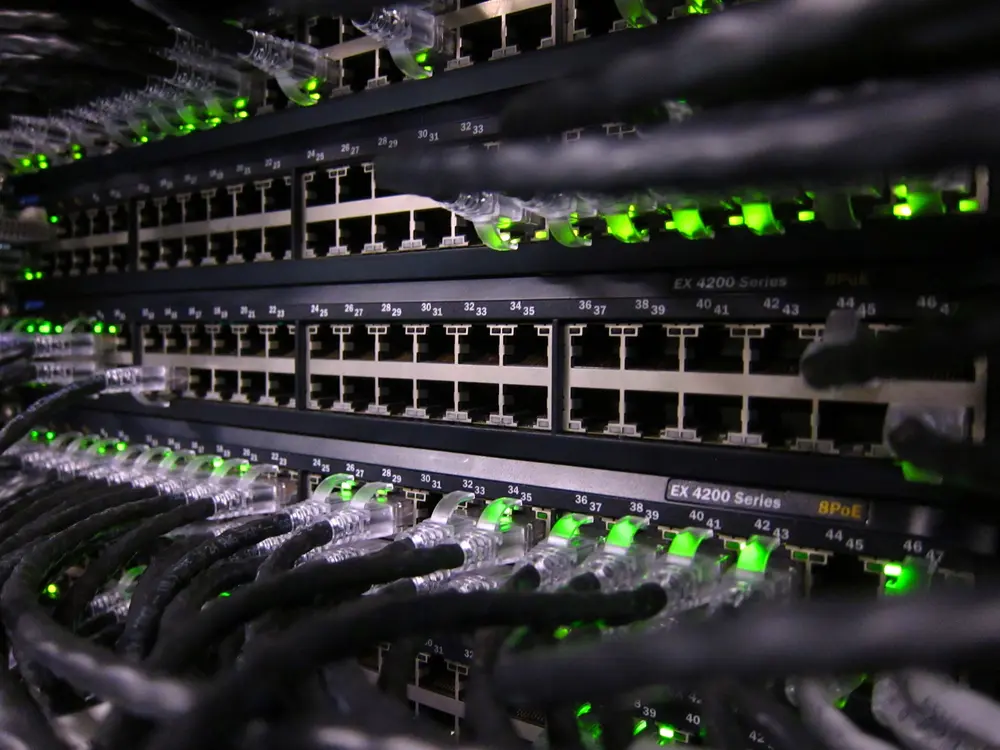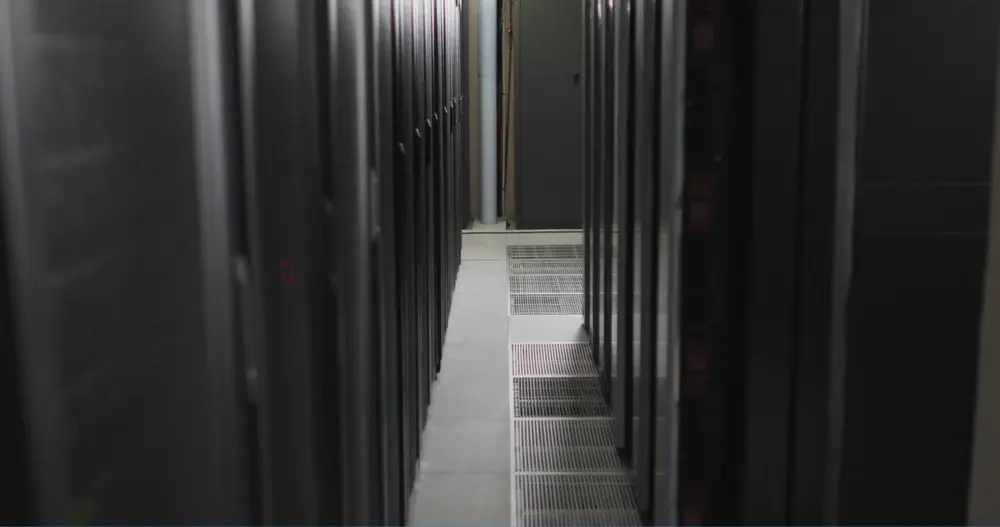Follow the OSI model: The OSI (Open Systems Interconnection) model is a conceptual model that standardizes the functions of a communication system into seven categories, or layers. Network administrators often refer to this model when designing or troubleshooting network systems.
For example, when diagnosing a network connectivity issue, you might start at the bottom (Physical) layer to ensure that the hardware (like cables, switches, etc.) is functioning correctly, before moving up to the Data Link layer (checking MAC addresses, VLAN configuration, etc.), and so on, up to the Application layer. The OSI model provides a systematic way to understand and troubleshoot network problems.
Understand the importance of security: Cybersecurity is a top concern for any organization. Implementing robust network security measures is essential, such as firewalls, intrusion detection systems, secure network architecture design, and regular security patching.
For instance, you might apply the principle of least privilege (PoLP), ensuring that users or systems only have the minimum levels of access they need to perform their tasks. This concept is an essential part of various cybersecurity standards and frameworks, such as ISO 27001 (Information Security Management) and NIST’s Cybersecurity Framework.
Plan for scalability and redundancy: Networks should be designed with growth and fault tolerance in mind. This includes considerations for how easily new devices can be added to the network, and if there are backup systems in place in case of failure.
The use of clustering or load balancing, for instance, not only increases the capacity to handle more traffic but also adds redundancy, reducing the risk of a single point of failure. These principles map to ITIL’s Service Design and Continuity Management processes.
Regular monitoring and documentation: It’s crucial to monitor network performance and maintain up-to-date network documentation. This includes tracking network usage, identifying bottlenecks, and documenting network topology, IP addressing, equipment inventory, and change logs.
Importance of backups and disaster recovery planning: One of the cardinal rules in network administration is to always have up-to-date backups and a clear disaster recovery plan. This is not just about data but also configuration settings of network devices.
For example, in the event of a device failure, having a backup of the configuration can significantly speed up the recovery process. Disaster recovery plans are not a one-size-fits-all and need to be tested and updated regularly. These practices map directly to ITIL’s Service Continuity Management process and ISO 27031 (Guidelines for ICT readiness for business continuity).
Effective communication skills: While not necessarily technical, soft skills like effective communication are crucial in network administration.
Network administrators often need to interact with different stakeholders (like vendors, team members, or non-technical staff), explain technical issues in an understandable way, or justify the need for certain network resources or updates. For example, if a network upgrade requires downtime, the administrator would need to communicate this clearly to all affected parties, explaining the reason for the upgrade and how the downtime is being minimized. This principle maps broadly to interpersonal communication frameworks and ITIL’s Service Strategy and Service Design processes.
Setting up a robust network monitoring system: Monitoring is crucial in maintaining a healthy network, identifying potential issues before they become problems, and reacting promptly when issues do occur.
One important lesson is the need to monitor all aspects of the network, including servers, routers, switches, and applications. This can involve setting up systems for SNMP (Simple Network Management Protocol) for network devices, and perhaps using protocols like WMI (Windows Management Instrumentation) or agent-based solutions for servers.
An effective monitoring system should have alerting capabilities to notify the right personnel when certain thresholds are breached, for example when network latency exceeds an acceptable level. A solid network monitoring system should also provide insightful reporting features for historical trends and capacity planning. This aligns with ITIL’s Service Operation and Continual Service Improvement processes. For instance, suppose you’re using a comprehensive monitoring tool like Nagios or Zabbix. These tools can use SNMP to monitor routers or switches, gathering data such as bandwidth usage, packet loss, or device status. On a server, an agent might be monitoring CPU usage, memory usage, or disk space. Let’s say a certain database server begins using an unusually high amount of CPU resources. Your monitoring system could alert you about this issue, allowing you to investigate and resolve the problem (perhaps an inefficient database query) before it affects users or causes the server to fail.
Overview of network protocols: Network protocols are essentially the “languages” that devices on a network use to communicate. Understanding these protocols is key to being an effective network administrator.
The most important lesson here is understanding the core protocols used on most networks today: TCP/IP. This includes not only TCP and IP themselves but also common application layer protocols like HTTP(S) for web traffic, DNS for domain name resolution, and DHCP for dynamic IP addressing.
Understanding these protocols can help in many aspects of network management, from basic setup (like setting up DHCP correctly) to troubleshooting (like using a packet sniffer to examine raw network traffic). Knowledge of network protocols aligns with the Network and Transport layers of the OSI model. An example of the application of network protocol knowledge might be in the setup of a local area network (LAN). This would typically involve setting up a DHCP server to assign IP addresses to devices on the network. If users report that they’re unable to connect to the network, one troubleshooting step might be to check the DHCP server and ensure it’s functioning correctly and not exhausted of addresses to assign. If you didn’t understand how DHCP works, you’d have a harder time identifying and resolving this issue.
Best network troubleshooting techniques: When it comes to troubleshooting, it’s important to have a systematic approach to identifying and resolving issues.
A key lesson in network troubleshooting is “divide and conquer”. This involves breaking down the problem into smaller, more manageable parts. If a user can’t access a web server, for example, you might first check their network connectivity (can they reach other sites?), then move up the OSI layers checking each component in turn.
Another fundamental lesson is the value of good diagnostic tools. These range from basic commands (like ping, traceroute, and netstat), to more advanced tools like Wireshark for packet capture and analysis.
Understanding how and when to use these tools, interpreting their output, and combining their results to get a clear picture of the issue is a key aspect of network troubleshooting. These techniques tie in with the principles of ITIL’s Service Operation process, specifically Problem Management. For instance, imagine a user reports that they’re unable to reach a specific website. You might start troubleshooting by using the ping command to check network connectivity to the website’s server. If that’s successful, you might use traceroute to see the path packets take to reach the server, which could highlight any hops where packets are being lost or delayed. If the basic tools don’t identify the issue, you might escalate to a more advanced tool like Wireshark, capturing the packets being sent and received when the user tries to access the website. You might discover, for instance, that the HTTP requests are being sent and received correctly, but the content of the HTTP responses is not what’s expected, indicating an issue with the website itself rather than the network.
Tags: NetAdmin
Category: Infrastructure



